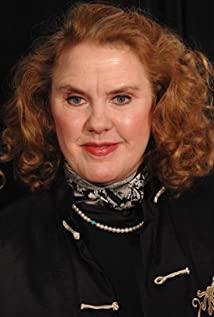I am looking forward to the ending to give a subversive reason, which can not only clear the previous doubts, but also give a satisfactory explanation to the whole film. It's a pity that the director just wants us to check whether our life is like a walking corpse, and the lines in the film are not thought-provoking.
According to Sister Toko Amano in "Literary Girl", sometimes, readers can interpret the content of the work regardless of what the author originally wanted to express, and discover another truth hidden deep in the pages. Therefore, I am going to give this film a third interpretation.
The first is that the undertaker is a perverted murderer who plots one seemingly accidental murder after another, takes the victim to his funeral home, and leads him to believe that he is dead. The second is that the heroine has died, and the undertaker is a guide of the undead, guiding the undead to cut off their attachment to the world, but the heroine does not believe in the fact that she is dead, and constantly deceives herself.
And the third interpretation I think is based on a passage in the film where the undertaker says to the little boy the gift between them "Jesus also had the gift of raising Lazarus and speaking to the dead". The undertaker had previously told the heroine that he had the ability to communicate with the dead, but from the previous paragraph we assumed that he concealed the real truth: his ability to make the soul that left the body return to the body of the dead. From this I think the heroine is indeed dead at the beginning, and even all the people sent to the funeral home are already dead, which explains why the funeral director can have a solid death certificate instead of using drugs as we think to make the hospital misjudgment People are dead (you can create an accident, but it would be bluffing to say that so many accidents were all planned by one person and no accomplice).
With this assumption, we can restore the whole story. The undertaker at first only found himself able to communicate with spirits, like his mother, etc., and asked them what they wanted their funeral to be like, for example, what flowers would they want. But those souls were frightened, complained about the cold after death, and regretted that they didn't know how to cherish at the beginning. So the mortician slowly figured out how to take away the fears of the souls so they could rest in peace.
So he found a way to bring the soul back to the body. Of course, he can't bring the dead back to life and regain life. The soul can only be fixed on the body for a period of time, ranging from one or two hours to three or four days at the most, and even if they can move the body, there is no corresponding feeling, the body is still will continue to corrupt.
The undead have tasted the feeling of rebirth, how can they be reconciled, they keep accusing and complaining that the mortician is unwilling to give them another life and let them experience the feeling of being alive again. At the same time, the mortician's thinking began to change. He couldn't stand his good intentions being smeared by the insatiable spirits of the undead. In the communication with the undead, he also discovered the ugliness of the soul itself, which is a sexual desire in the name of love. It was the hypocritical state of being timid, cowardly and without courage while annoyed at his ordinary repetition of lifeless life. He began to believe that people's life and death are not determined by the activities of the body, but by the vitality of the soul. Those who have withered and cannot feel their vitality might as well die.
Therefore, the mortician started his hunting operation. He paid attention to those "dead" people, analyzed and planned them, pushed them to die when it was important, and then summoned their souls to guide them to perceive them in the flesh. To their death, not only physically, but also spiritually.
The heroine in the film is a prey of the undertaker. He followed the heroine and saw her quarreling with her boyfriend, overtaking the heroine's car on the way, causing her death in a car accident. The heroine entered his plan step by step, and he also found his heir, but what he never imagined was that the heroine's soul gradually began to re-integrate with her body. When it was foggy, he was shocked. This was something that had never happened before. What should I do? Did I really bring her back to life? Calm down first, so I took out a handkerchief and brushed off the layer of fog.
The mortician was confused and confused. He thought of releasing the heroine, but what if the heroine didn't believe his explanation and thought he had imprisoned herself? Does the resurrection of the heroine mean that her soul is still saved and her judgment is wrong, does that mean that her entire plan is wrong? In the end he gave the heroine a choice, and the heroine chose death. So he reasserts himself, so when the heroine finds out that she is alive, the undertaker still injects her with tranquilizers.
At the end of the film, the undertaker pierces the heroine's boyfriend's lungs with a steel drill to prevent him from making the same mistake again, making it impossible for him to be resurrected forever.
PS If according to my interpretation, Liam Neeson is the absolute protagonist, the undertaker is the god of the world, and has the ability to give life and sanction life. His pain is that there are many people who are not worth living in this world. People are still happy or lingering in this world. For example, the policeman who looked at his brother's body has a necrophilia. Although the heroine's boyfriend loves the heroine, he is a selfish love and can't understand the heroine's pain.
View more about After.Life reviews










